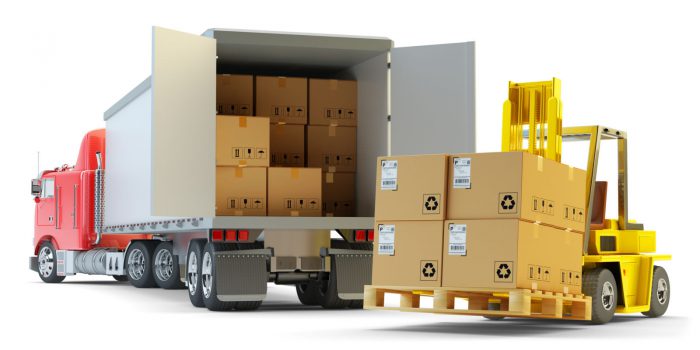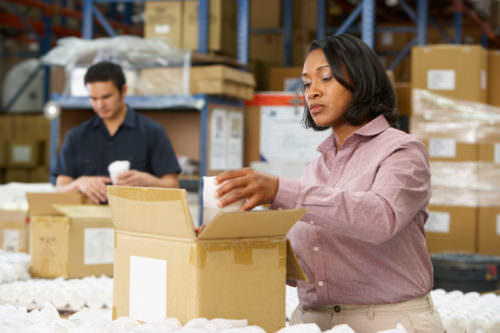3PL Fulfilment Process
If you’re considering working with a 3PL, what goes on in a fulfilment centre may seem like a black box. But the fulfilment process doesn’t have to be a mystery, nor should it be!
This page will shed some light on the fulfilment centre operations that take place between checkout and when the order arrives on your customer’s doorstep.
Request Fulfilment Pricing
We’ll get back to you within 24 hours. Privacy Policy
The 3PL fulfilment process
Depending on the 3PL, the scope of services offered varies greatly. Some offer basic pick, pack, & ship services, while others offer kitting & returns management. Here are the primary 3PL fulfilment processes even the most basic 3PLs follow.
Receiving
Your 3PL can’t ship orders if they don’t have your inventory! The receiving of inventory is one of the top warehousing operations that has to take place before your 3PL can start fulfiling orders for your online store. Receiving refers to the acceptance of incoming inventory followed by its storage.
Each 3PL has its own processes for receiving and storing inventory. For example, at ShipBob, we require clients to fill out a Warehouse Receiving Order (WRO) so that we know which products we will be receiving and how many units.
This helps us stay organised and timely with receiving, meaning we can start fulfiling your orders more quickly and efficiently.
Once we receive your inventory, we store your items in our fulfilment centres. Each SKU has a separate dedicated storage location, either on a shelf, in a bin, or on a pallet.

Picking
When your customer places an order, it’s time for the fulfilment process to begin! Some 3PLs require you to manually upload orders to their system; however, there are 3PLs (like ShipBob!) that can integrate with your online store and automatically push orders to your fulfilment provider.
This modern fulfilment software integrates with top ecommerce platforms and marketplaces to bring orders, shipments, inventory levels, and more together in one place.
As soon as an order is sent to your 3PL, it is assigned to a warehouse picking team or a picker. The picking team receives a picking list of the items, quantities, and storage locations at the facility to collect the ordered products from their respective locations.
Packing
When all items in an order have been picked, it’s time to get them securely packed up. Some 3PLs will charge for packing materials as a separate line item, while others include them as part of their fulfilment services.
At ShipBob, for example, plain, standard packing materials — brown boxes, yellow bubble mailers, white poly bags, packing tape, and dunnage — are included. We strive to choose the best packing materials to both protect your products and achieve the lowest practical dimensional weight. We also allow our clients to use custom packing materials to put their brand front and centre at an additional cost.

Shipping
The next step is shipping your order. Most 3PLs will purchase and print shipping labels on your behalf. Some 3PLs have preferred couriers with whom they partner, while others compare shipping costs from a variety of couriers.
ShipBob does the latter to make sure that our clients receive the most affordable pricing possible for the delivery speed their customers choose.
Couriers such as DHL, USPS, and UPS pick up orders from fulfilment centres to ship. Once the order ships, you should automatically receive tracking info from your 3PL. With ShipBob, as soon as the order ships, tracking info is pushed back to our clients’ stores.
Conclusion
We hope this post demystifies the basics of the fulfilment process. Of course, there may be variations in this process from 3PL to 3PL. Unlike an on-demand warehousing company, 3PLs are the experts in fulfilment, not just excess storage needs.
At ShipBob, every action we take while fulfiling your order has an automatic, corresponding digital counterpart in our dashboard, which keeps our ecommerce fulfilment processes efficient and consistent. Each step is directed by information that is automatically populated in the dashboard when an order is submitted.
For example, in the picking step, the ShipBob dashboard shows our fulfilment associates exactly which SKUs will go in which order, and where in the fulfilment centre to find those SKUs. This takes the guesswork out of fulfilment and helps us fulfil orders for hundreds of clients each day.
For more info on how to choose the best 3PL for your needs, check out our guide below.
3PL Fulfilment Process FAQs
What is 3PL fulfilment?
3PL (third-party logistics) fulfilment refers to outsourcing the retail order fulfilment process to a team of experts. This includes receiving orders, picking and packing, inventory management, shipping, and warehousing. By outsourcing fulfilment to a 3PL, you’re able spend less time fulfiling orders and more time on developing your business.
What does a 3PL do?
3PLs go beyond just fulfiling orders, but not all 3PLs are the same. Depending on the 3PL, fulfilment logistics services may include: storing and managing ecommerce inventory, 2-day shipping, distributed inventory, fulfilment analytics and reporting, returns management, and more.
What is outsourced fulfilment?
Outsourced fulfilment refers to hiring a 3PL to take care of all order fulfilment-related tasks from receiving inventory to shipping orders. Outsourcing fulfilment comes with several benefits including cost and time savings, optimised supply chain, and the ability to ship orders to customers, across the country or globally, faster.
What is a 3PL vs. a 4PL?
A 4PL adds an additional degree of separation between ecommerce merchants and their 3PL partner. A 4PL manages and arranges 3PL services for the merchant; this is sometimes referred to as “double brokering.” A 4PL offers an end-to-end supply chain management solution which includes 3LP services, manufacturing, and more.